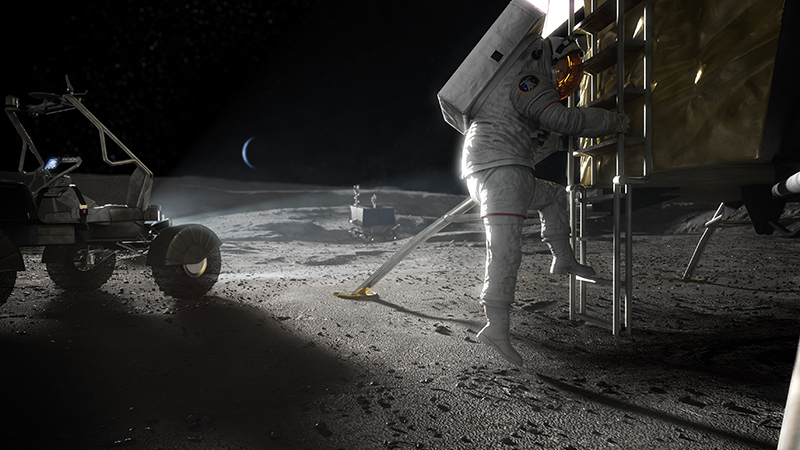

Image Courtesy: NASA
NASA argues its Artemis Program will be the foundation of future missions deeper into space. It will eventually establish a lunar base and orbital gateway for exploring the Moon and fuelling missions to Mars.
The latest development in the Artemis Program is a series of rewards for Appendix N of its NextSTEP mission. To understand more about how this feeds into the Artemis Program, let us take a look at the companies that won.
NextSTEP stands for Next Space Technologies for Exploration Partnerships and is part of NASA’s larger plans for deep space exploration. It is a joint venture between public and private institutions to develop technology for travelling further into space.
The part that concerns us is Appendix N, which covers Sustainable Human Landing Systems and Risk Reduction. As the name implies, it will develop lunar landers that are sustainable, low risk, and designed for repeat use. Considering we have seen commercial companies developing reusable launch vehicles, this shift comes as no surprise.
These lunar landers will also feed into later developments in the Artemis Program and will likely inform the design choices of Mars landers. In short, these are important decisions that will determine the future of manned space missions.
In July 2021, NASA announced it would award money to companies that provided appropriate plans for lunar landers. In September, it announced $146 million in awards to five companies. The awards are as follows:
Along with developing landers and related systems, the companies will also provide feedback on NASA’s requirements. Hopefully, this will result in streamlined systems and better performance during development.
But what are the benefits of sharing awards between companies? The most obvious is that different companies will take unique approaches to the problems. This is evidenced in the way SpaceX and Blue Origin approach their reusable launch vehicles.
The results of these studies will shape the future of NASA’s lunar missions, so it is important to get it right. Contracting five companies to work simultaneously should also reduce study time. Coordinating results through NASA means a better understanding of present issues and faster implementation of changes.
The Appendix N awards have no impact on existing NASA awards and contracts, such as its $2.9 billion Human Landing System contract with SpaceX. In fact, this may be why SpaceX received the smallest award out of the five companies.
The Artemis Program intends to make lunar travel mainstream by the late 2020s. Perhaps the most important aspect of this goal is sustainable (and comparatively low cost) lunar landers. Therefore, the Appendix N award is a crucial aspect of the overall programme.
It will be fascinating to see how each company applies its unique vision to the challenge. Although it will be a few years before we see any viable solutions, we hope it will not be too long before we start seeing early concept designs for these lunar landers.
